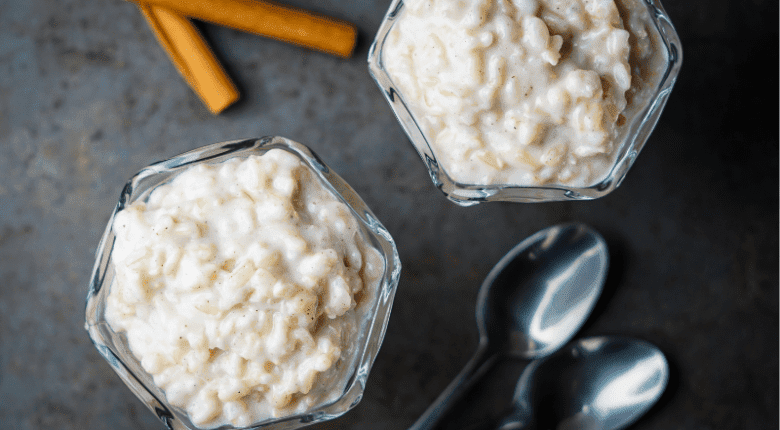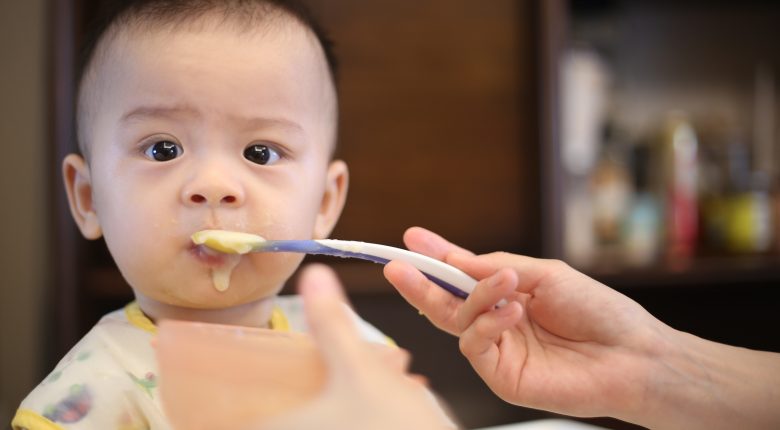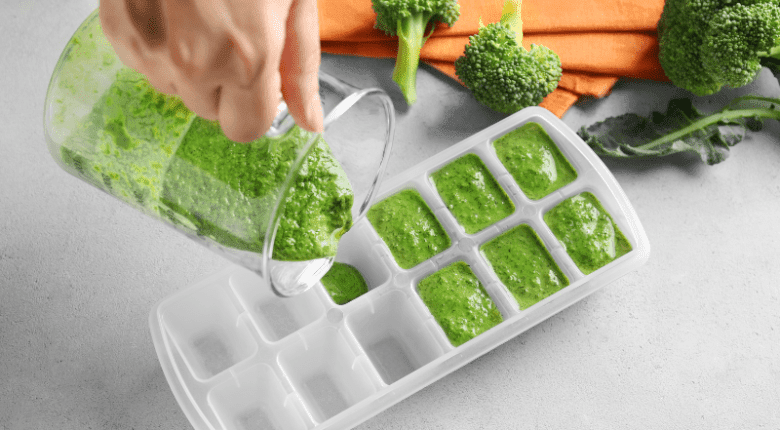Do you want to freeze a large amount of baby food? Thaw it out in small portions to save time and keep as many of those good nutrients intact as possible?
This article will provide you with all the most important information on the topic of pre-preparing, freezing, thawing and storing baby food.
Pre-prepare baby food yourself or just buy it?
As soon as parents start their children on solids, the question arises: Do we make the baby food ourselves or do we just buy it? What sorts of vegetables should we use if we do it ourselves?
Purées become an option starting at about five or six months. These are often meat/veg/potato mixtures to which you can add carrots, courgettes or parsnip, to name just a few vegetables.
Later on, you can add potatoes and rapeseed oil and, even later still, lean meats. It’s generally a good idea to give these purées to your infant at midday to ensure better sleep at night.
About a month later, you can introduce a second type of purée based on milk and grains in the evenings. For this, a porridge made of (whole grain) flakes along with pasteurised or ultra-heat treated cow’s milk are excellent options. In order to ensure good iron absorption, other mealtimes should not contain milk. However, one month later, you can start introducing grain/fruit mixtures in the afternoons.
Why it’s a good idea to pre-prepare your baby food?
To reduce the stress of preparing food for your infant every day, consider pre-preparing large amounts and different types of baby food and then freezing it. You’re also reducing your overall energy consumption by not constantly cooking smaller portions. Not to mention making baby food yourself also saves additional resources as opposed to ready-made baby food as it involves fewer jars and less transportation. Another advantage: Vegetables that are no longer at their absolute freshest can still be made into an excellent purée, thus saving them from the bin. Questionable or rotten food should of course never end up in your infant’s food. And it is also not recommended to freeze the milk/grain mixture, as there is a higher risk of germ formation.

Freezing baby food
When pre-preparing and freezing baby food – before you’ve chopped your first vegetable – make kitchen hygiene your highest priority. Wash your hands thoroughly before you begin and use separate knives and cutting boards for your meat and your vegetables. You should also thoroughly clean and sterilise the containers you’re going to use to freeze the food before you start. Also remember to use fresh vegetables wherever possible. If you would still rather prefer to use frozen vegetables, be sure to refreeze the finished product as quickly as possible, making sure it doesn’t sit at room temperature for longer periods of time.

You can store your pre-prepared baby food in your Liebherr chest freezer for up to two months.
Any sort of vegetable purée can be frozen with the exception of vegetables containing high levels of nitrates, such as spinach, fennel or beetroot, Why not nitrate-rich foods you ask? Elevated levels of nitrates themselves but also especially nitrite – which is formed by microorganisms when the food is initially heated and then kept warm – is harmful to your baby. In general, freeze baby food as soon as possible in order to prevent microorganisms from propagating. It’s up to you whether you’d like to add potatoes to the mix, but some babies don’t like thawed potato purée as the consistency changes during the freezing and thawing processes. The starches and stickiness of this tuber as well as its ability to bond with water molecules change. Our recommendation: Add potato to the thawed vegetable purée later. In the future, there will probably be types of potatoes that are better suited to freezing, but the potatoes readily available in the supermarket today are generally not bred for this quality.
Add rapeseed oil to the mixture after thawing to change the consistency. You may want to consider adding 30 g of meat to the vegetable/potato purée two to three times a week. Freeze the meat separately from the vegetable purée or cook it fresh.
6 tips for freezing baby food, in summary:
- Freeze the meat and the vegetable constituents of baby food separately
- For the freezing process, use sterile containers that you can seal air-tight and label
- Don’t freeze food with high nitrate content such as beetroot, spinach or fennel
- By pre-preparing and freezing a large amount of baby food, you’re cutting down on resource consumption
- Only add potatoes and rapeseed oil after the food has thawed
- Make kitchen hygiene a top priority during the preparation process
What can you store and freeze the baby food in?

You can basically use any container you have to store and freeze baby food. If you’re unsure, check the bottom of the container for the snowflake symbol. If it’s present, the container is definitely freezer-safe. But you can also sterilise and freeze empty preserves jars. Just remember to fill them only three-quarters full. When you’re just starting your baby on solids, ice trays are also an excellent option for freezing your purée, but make sure you use trays you can seal with a lid of some description in order to avoid freezer burn. Label your purée with the date it entered the freezer so you can keep an overview of the various sorts of baby food you’ve prepared.
Thawing baby food
Whenever you need a portion of baby food, you can defrost it overnight in the refrigerator. You can also warm up and thaw your purée in a baby food warmer or over a water bath. Warming it up in the microwave is also an option. Just make sure you stir the purée thoroughly. Otherwise, it might get too hot in places. In general, you should always check the temperature of the purée before giving it to your baby. Do not freeze it the purée again once it has been thawed out to avoid the spread of microorganisms.
Tips for thawing baby food, in summary:
- Thawed out baby food overnight in a refrigerator
- You can also warm up your baby food in a baby food warmer, over a water bath or in a microwave
- Always test the temperature of the food before giving it to your child